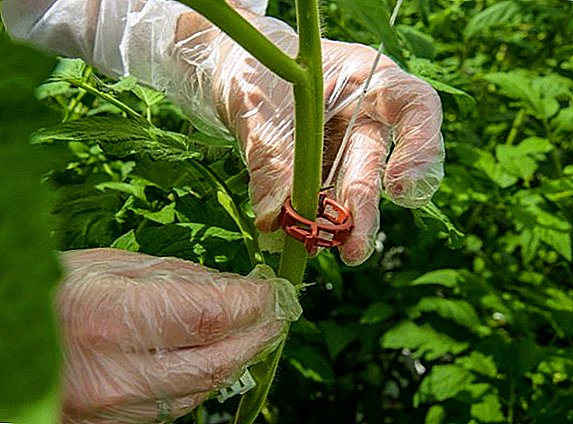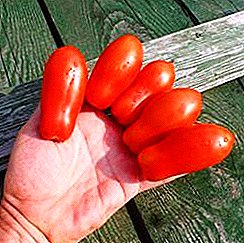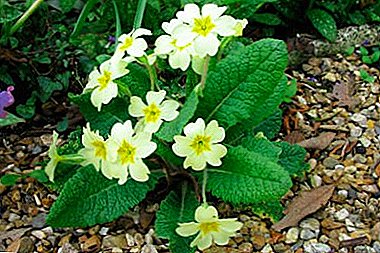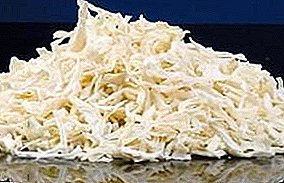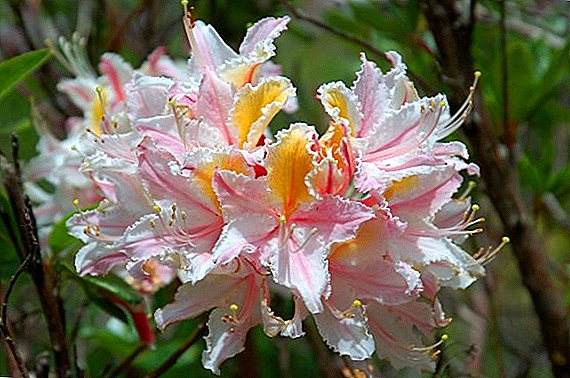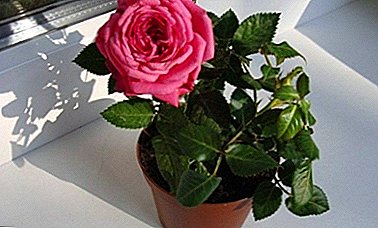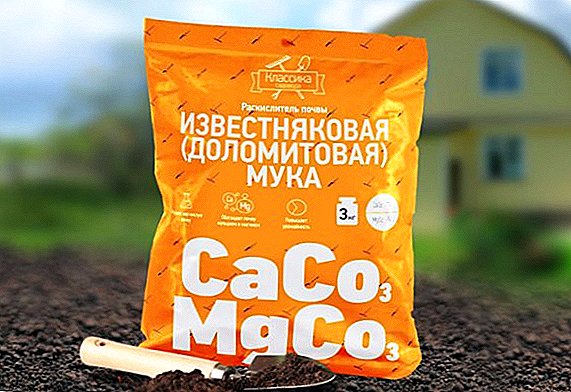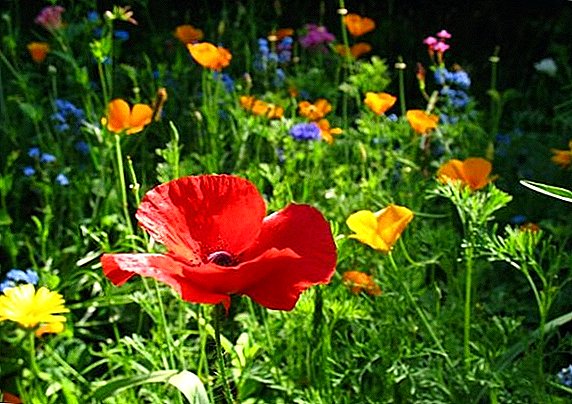 The mixture of various herbs, flowers and cereals, which looks like a piece of a flowering meadow in the garden, is admirable.
The mixture of various herbs, flowers and cereals, which looks like a piece of a flowering meadow in the garden, is admirable.
This is what the Moorish lawn looks like, the secrets of growing it, as well as the pros and cons will be discussed further.
What it is
During the time when the Moors reigned in North Africa and Spain (VII-VIII century), the art of landscape design, architecture and science received the highest development. Europeans were amazed by the greatness of palaces, cities and parks. It was the Moorish lawns that were the basis of the lush palace gardens.
In their luxurious parks, the Moors were able to embody the idea of a lawn that resembles wild meadowswhile being part of the composition. It was then that the Europeans adopted the customs of their southern neighbors, and such a lawn was called Moorish. 
Advantages and disadvantages
For a long time, lawns, on which not only cereals but also ornamental plants grow, have been forgotten. And only a few years ago, interest in the Moorish lawns began to return, and their incredible photos began to decorate the covers of subject magazines.
Important! Moorish lawns are not designed for games and picnics, it is better not to run on them, because not all cultures that make up the lawn are resistant to trampling.
pros
Today, the world's largest gardens adorn Moorish lawns. And the reason for this spread lies in several advantages:
- Such a lawn does not require tedious and regular haircuts.
- Satisfied with minimal care.
- Constantly changing, as the flowering of some plants is replaced by others, and this process lasts from spring to late autumn.
- No need to constantly care.
- Easy to renew next season.
- High decorative and variety of colors.
- It grows even on poor soils.

Minuses
Among the negative aspects of the landing of the Moorish lawn indicate the need for seeding. Indeed, despite the abundant self-seeding of some Letniki and the stability of the bulbous ones, from time to time it is necessary to compact the beds.
Growing on a large area will require a lot of work, and it will be harder to keep track of the resettlement of crops.
In addition, it is necessary to take into account that the variety of flowering herbs attracts not only butterflies, but also bees, wasps and bumblebees, and the pollen of some plants is a strong allergen.
Selection of suitable plants
Make a moorish lawn with your own hands easier than ever: pick the right balance of herbs and flowers (10:90 or 20:80) and sow them to your taste. The following grass is suitable for such a lawn:
- timothy grass;
- red fescue;
- meadow grass;
- bent thin;
- lagurus;
- grazing ryegrass.






- crocuses;
- proleski;
- daffodils;
- grouse;
- tulips.





Important! Experts advise to select no more than 10-15 items in the composition.
To create a fabulous lawn designers offer these flowers:
- cornflowers;
- marigold;
- dwarf zinnias;
- catchment;
- Chinese carnation;
- veronica;
- harvest;
- poppy;
- daisies;
- mattiola;
- chamomile;
- enotera;
- forget-me-not;
- Snapdragon;
- toadflax;
- chrysanthemum;
- bathing;
- Nigella
- daisy;
- meadow clover;
- nemesia;
- primroses.













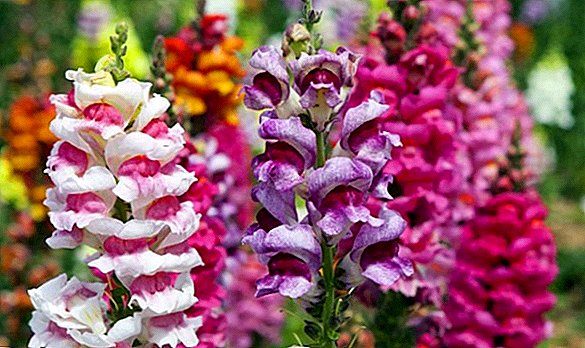








However, this list can not be limited and give free rein to the imagination, adding beautiful fragrant letniki: mint, thyme, kosmeyu, flax, ageratum, escholtsiyu.
It is also worth noting that for a beautiful lawn you need to pick only unpretentious plants. At the same time, the lawn should not be allowed to become a monoplant of one perennial plant, so that it does not behave aggressively towards its neighbors.
Did you know? Petals of some colors change color. For example, unblown lungwort has a bright pink color, and when the inflorescence opens and is ready for pollination, the petals turn lilac. When the flower becomes empty from nectar, it brightens, becomes blue, and then almost white. This feature is used by bees when collecting nectar.
Choosing a place
Not everyone who wants to grow a flowering lawn knows how to plant it properly. By and large, there is no trick here, the main thing is to choose the optimal place for landing. Typically, these lawns are planted in the shade of trees, on the shore of a reservoir or on the sides of the tracks.
It should also be borne in mind that traditional flowering grass mixtures are sown in open, well-lit areas. 
Site preparation
Special attention is paid to site preparation. Prepare a place to plant in the fall to reduce the number of weeds. The plot is well leveled, and the pebbles and roots are removed. Then the soil is dug up to a depth of about 30 cm and covered with a dark non-woven material.
In the spring, poor soils are fed with mineral fertilizers, and sowing works themselves are best planned for mid-summer, when most of weeds fly around seeds.
In June, the agrofibre is removed and the soil is plowed to make it airy. At this time, the remaining weed roots are harvested. After that, the earth is compacted (roller, barrel, weighted with cargo, etc.).
If the chosen location is prone to waterlogging, it is worth taking care of the drainage. After all, no matter how unpretentious the plants are, stagnation of water can lead to their impoverishment and even death.
Sowing patterns
Once the soil is prepared, you can begin to sow. The best time for this is June-July. As already mentioned, the Moorish lawn can be made independently, and you can use ready-made mixtures.
Important! In order to obtain uniform seedlings, it is recommended to mix the seeds with purified river sand (1: 3).
As before planting the rest of the plants, before planting a Moorish lawn, the soil is watered. Seeds are sown to a depth of 0.5-1 cm (more deeply not worth it, because it will delay the emergence of seedlings). After planting the soil is compacted (so that the seeds are not washed), watered and covered with agrofibre. After the end of sowing, seedlings are expected to be about two weeks.  It is possible to sow a site as evenly, and doing islands from different plants (at first to sow cereals, and between them meadow flowers).
It is possible to sow a site as evenly, and doing islands from different plants (at first to sow cereals, and between them meadow flowers).
You can disperse the seeds in the form of longitudinal and transverse strips throughout the site and with the help of a rake evenly embedded in the soil. After - the surface is compacted and watered. However, it is worth noting that with this method more seed is consumed.
When preparing for sowing, it is necessary to remember that decoration, like the Moorish lawn, is a mix of meadow and flower crops. Therefore, when planting, they observe such a sequence: first turf-growing herbs are sown, and then - flower plants.
Flower lawn care
It is not at all difficult to care for the Moorish lawn, but it must be done in a timely and competent manner.
Watering
The flower lawn is poured over the first two weeks after planting in a droplet manner so as not to damage the young shoots. When all seedlings are stronger, moisture should be done as needed (usually enough once a week).
Moorish lawn should be watered in the evening or early in the morning. It should be borne in mind that the soil should be saturated with 10-15 cm. 
Weed removal
Weeds on this type of lawn are removed exclusively by hand. This is, in principle, the main difficulty in growing it.
Did you know? In Ireland, the sections of Catholics and Protestants differed easily: Catholics planted white flowers near the house, and Protestants orange.
Loosening
In order to form a branched root system that would independently extract moisture from the lower layers of the soil, it is necessary to provide aeration. Since the lawn can not be loosened, a piercing method is used. To do this, you can use conventional forks.
Fertilization
When caring for the Moorish lawn do not forget about the fertilizer of the soil. As a rule, feeding is made the next year after planting. Do not fertilize the lawn immediately after planting - it will damage the growth of plants.  By and large, the lawn itself will begin to signal the need for mineral fertilizers (for example, the plants will begin to turn yellow).
By and large, the lawn itself will begin to signal the need for mineral fertilizers (for example, the plants will begin to turn yellow).
The most optimal dressings are complex fertilizers intended for flowering lawns. They contain the maximum required easily digestible nutrients.
Haircut and Mowing
Mow the motley lawn twice per season:
- For the first time - after the greenery appears, but before the flowers bloom. Do this so that the greens do not suppress the inflorescences.
- The next haircut is carried out after the flowering season is over (at the end of September). By this time, many flowers are already withered, and the seeds will already be in the ground. The height of this mowing is 8-12 cm.
 Autumn mowing is carried out in dry weather, and the greens are left on the site for 3-5 days and only then removed.
Autumn mowing is carried out in dry weather, and the greens are left on the site for 3-5 days and only then removed.To mow a lawn, you will need a lawnmower (for example, electric) or a trimmer (electric or gasoline).
If bulb plants are planted on the lawn, they are cut in the fall after the leaves have died.
Perennial lawns are sheared after perennials are withered. Such lawns need to be cut at the end of June, when spring crops will blossom, and at the end of October (if there are plants that bloom in the fall). It must also be remembered that the seeds should be allowed to ripen and crumble on the ground. In this case, the seedlings in the spring will begin to germinate on their own, which will eliminate the need to plant and add new plants.
If you have long dreamed of an unusual lawn on your site, then the Moorish lawn is what you need. With proper selection of herbs and flowers, it will delight with its amazing appearance and fragrance from summer to autumn.


